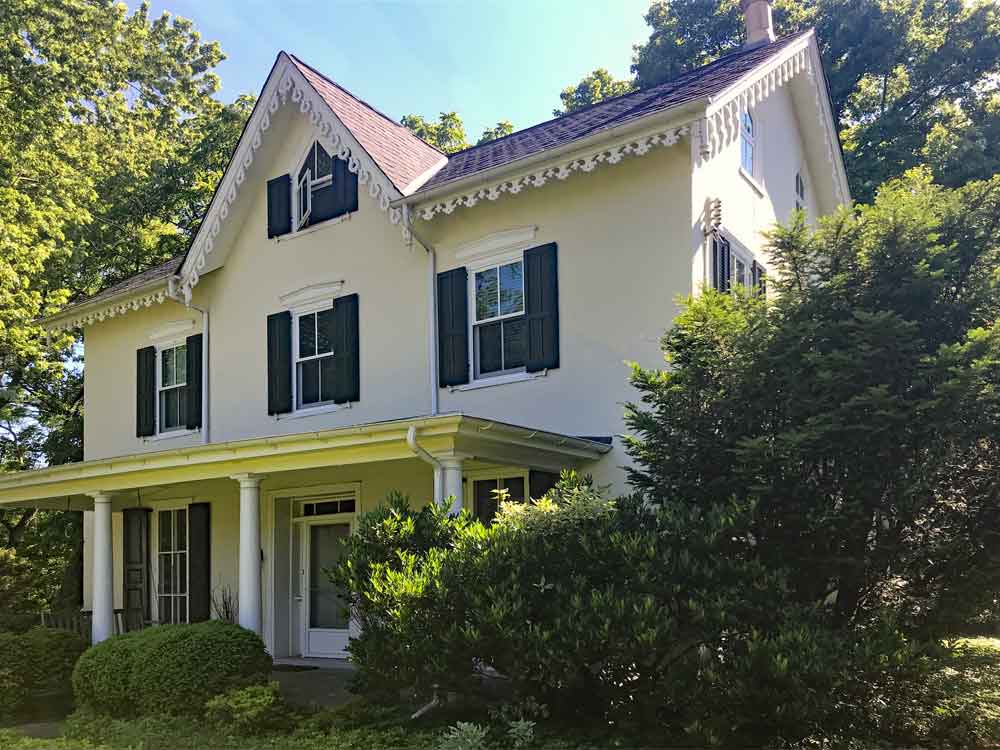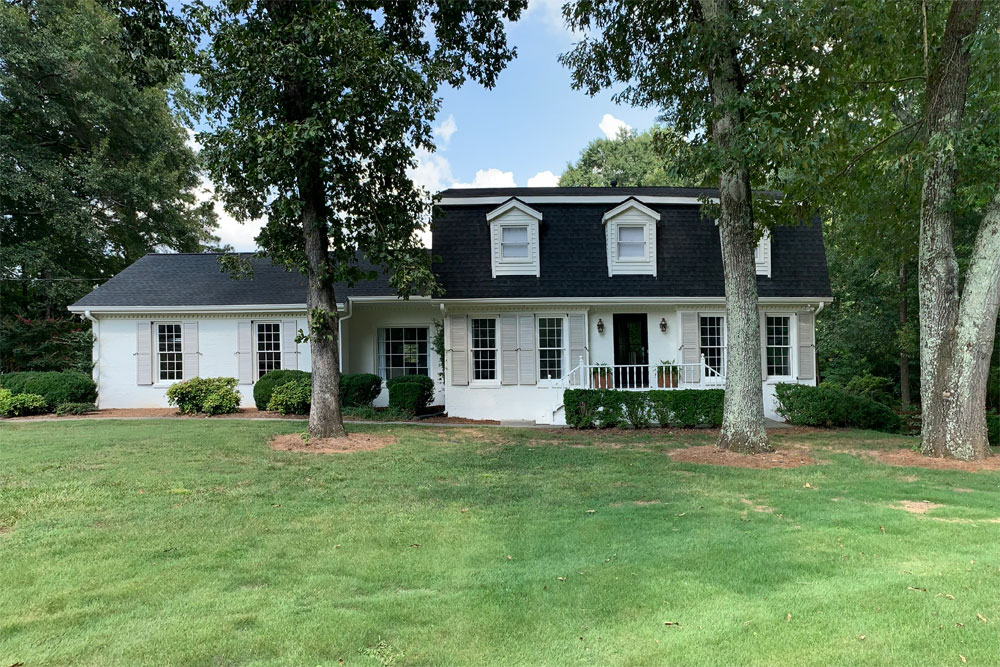Should Exterior Shutter Louvers Point Up or Down?
ShutterLand louvered shutters are manufactured with fixed louvers, meaning that they are locked into a stationary position. Wood louvers are placed at a 17° angle with space between each louver for air to pass. Composite and vinyl shutters are also made with static louvers to mimic the appearance of the original wood variety.
It is often debated, should exterior shutters louvers point up or down. In short, the decision is at the discretion of the homeowner. But, it is good to understand why and when it is better to use one direction in favor of the other.

Historical and Modern Wood Louvered Shutters
It is seldom necessary for modern homes to use exterior shutters with louvers that rotate. Interior plantation shutters commonly incorporate movable louvers to create privacy and control sunlight. Historically, exterior shutters were used for the same purposes, but have become less necessary on homes with central air conditioning, screens and indoor window coverings.
Movable Louver Exterior Shutters
Movable louvers are less desirable today for several reasons, even if just installed for aesthetic reasons. First, the pivot point where the louver connects with the side stile creates multiple points of entry for moisture that results in eventual deterioration of the material. Also, articulating louvers that are not all adjusted to the same angle can appear sloppy and disjointed. Finally, painting – or repainting – is difficult and can inadvertently anchor the louvers in undesirable locations, or make adjusting difficult.
Faux tilt bars can be attached to ShutterLand composite and wood louvered shutters to simulate the look of movable slats. Giving the appearance of movable louvers is great for renovations of historic houses with exterior shutters. Faux tilt bars can be placed from top to bottom of a shutter without an exterior shutter divider rail. For shutters with a divider rail, the tilt bar is split into two or more sections. For an even more custom look, a tilt bar can be used on either just the top or just the bottom louver area.
Should Louvers Point Up or Down?
Outdoor wood shutters are frequently installed to accurately replicate the historical application, and homes of the past did commonly feature movable louvered exterior shutters. Traditional movable louvers can be arranged at any point on the rotational spectrum. New outdoor window shutters are largely installed in a fixed position to be purely ornamental. ShutterLand concludes that it technically does not matter if stationary exterior shutters are installed with louvers in the up or down position, and it is up to the homeowner to decide what looks best on their house.

Functional Fixed Louvered Shutters
Wood exterior shutters can be installed with functional shutter hardware that allows the panels to swing open and closed. Open, the shutters lock to either side of the window with shutter dogs. In a closed position, the shutters cover the window and shield from harsh sunlight and shed rain away from the house. The louvers must slant down and away from the window opening to best protect from both elements when closed. If the shutters will be operable, they should be installed with the louvers angled up and away from the building when fully open.
Vinyl Louvered Shutters
Vinyl louvers are oriented down by default. The presentation of purely decorative vinyl shutters with louvers slanted down is widely accepted and rarely questioned.
Composite Louvered Shutters
Composite shutters are also automatically constructed with downward pointing louvers. The louver direction can be reversed on special request. The composite louvers are milled in sections, so there is no space between individual louvers. The 1 inch louver is cut at a 20° angle and the 1-3/4 inch louvers at 10°.
Functional Exterior Shutters
In some regions of the United States, weather-resistant exterior shutters are still being used to effectively control the environment of indoor rooms. Space between the louvers allow for air to pass through the living space on temperate days. Southern shutters are installed on homes for reasons more than presentation. Florida shutters block intense sunlight from entering the home. New Orleans shutters regulate privacy on tight city streets. Whatever the reason, louvered shutters will enhance your property.

